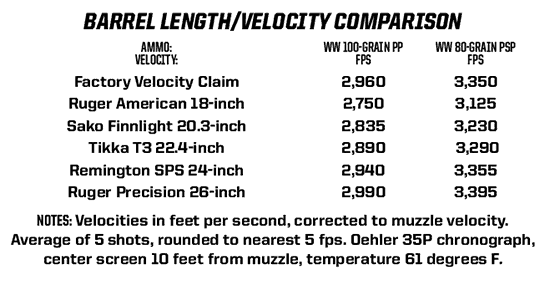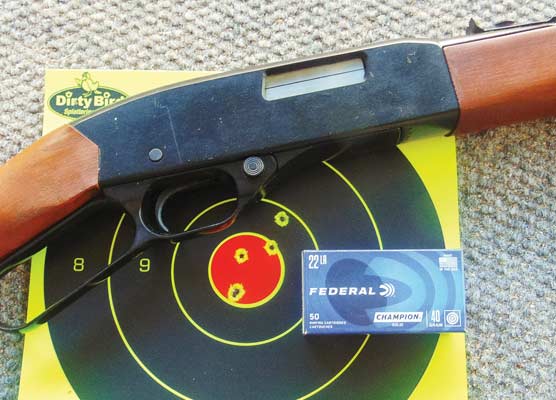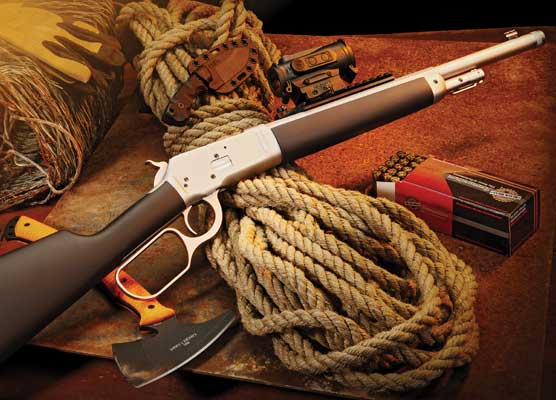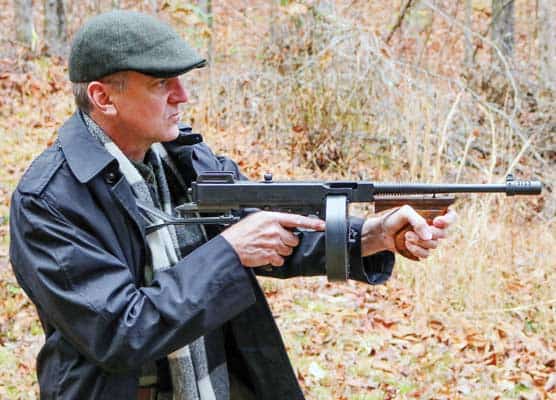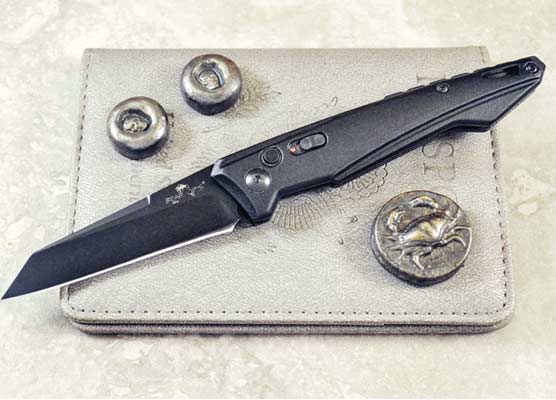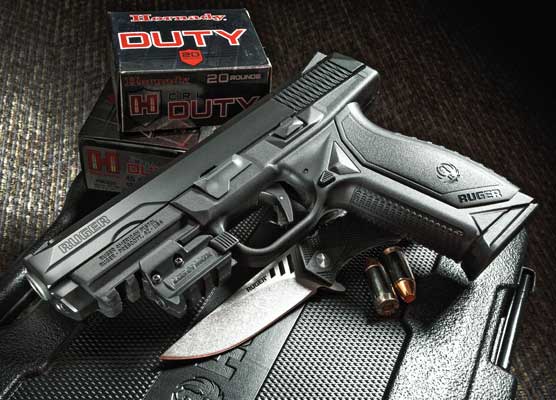Weather & Ballistics
Pay Attention To The Variables And
You’ll Err Less At Long Range
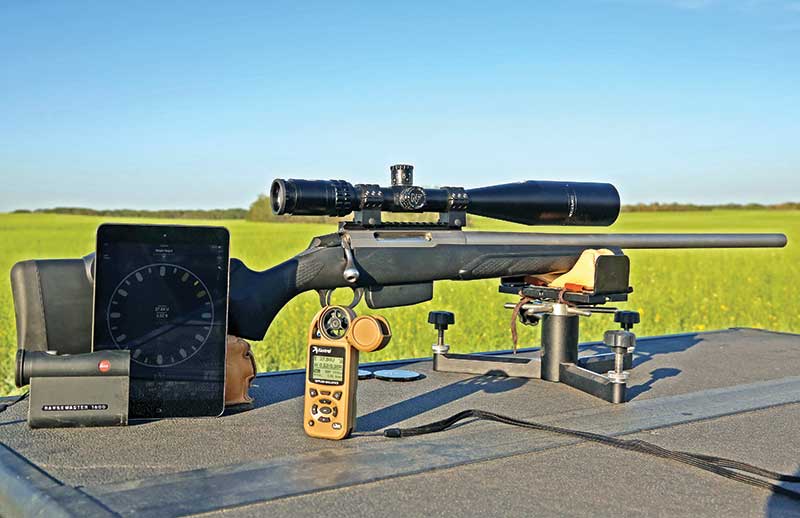
The tonneau cover of a pickup isn’t a great substitute for a benchrest, but is a lot handier.
With a few easily portable items of equipment it is possible quickly set up for longish shots
in the field. Rifle is a very accurate Tikka T3 HB .308 with Nightforce NXS 15-55x52 scope,
20 MOA base. A Sinclair front rest is portable yet quite stable. The Leica 1600 and Kestrel
Ballistics Meter provide all the data needed to make the appropriate elevation and windage
adjustments. Showing them on the iPad makes for even greater convenience.
Successful long-range shooting is a combination of science, art, and physical skill. The art is learning to handle wind. Since wind varies in strength and direction, and changes constantly over time and location, it is an art no one will ever master. Which doesn’t mean we quit trying!
Personally I believe skilled shooters are made, not born. Anyone capable of safely driving a vehicle in city traffic or hitting a golf ball can become a good shot.
The science component is the study of ballistics. Ballistics is a highly developed, very precise field of study. With today’s electronic tools, if all the relevant data about the bullet and environment are correctly entered, bullet path, bullet drop, and appropriate sight settings can be calculated accurately.

The Kestrel 5700 Elite Ballistics Meter not only monitors weather, the ballistics
program by Applied Ballistics calculates and displays firing solutions. With the
free Kestrel Link App the data can be transferred to a smartphone, or in this case
to an iPad mini. Information from the Kestrel ballistic program is sent wirelessly
to the iPad mini. The “clock” orients the target at 12:00, with the wind direction
shown at 1:30. Corrections (here in MOA) are shown for elevation and for windage
based on average and maximum recorded wind speed. Data for the cartridge/rifle
profile being used, and current weather conditions, appear on the bottom of the screen.
More Tools
All of which means you need accurate data, which means you need reliable data measurement and calculating tools. In addition we need a reliable ballistics calculator to process the data. (Actually, ballistics was already an advanced study before there were calculators, or even electricity. Mathematicians used pencil and paper to work out the calculations, some of which literally took weeks to complete.)
Other tools we need include a chronograph and a laser rangefinder. One of the most important tools is a portable weather station. Kestrel weather stations by Nielsen-Kellerman are by far the most popular with serious long-range shooters.
The Kestrel 4000 was virtually a standard with long-range enthusiasts. I’ve used one for several years and have been most impressed with its quality, reliability and durability.
The 4000 has been replaced with more advanced technology. For shooters, the best of the series are the Kestrel Ballistics Meters, which combine weather data gathering with a highly advanced ballistics program from Applied Ballistics. Two models are currently available, the Sportsman and the Elite.
The ballistics meters were developed with input from long-range competitors, among them Bryan Litz, founder of Applied Ballistics. Litz has probably done more than any single individual in studying the science of long-range shooting, and making the knowledge available to the shooting public.
A word about Nielsen-Kellerman. Their products are developed, tested, and assembled in the USA, using US-made components as much as possible. Standards of materials, assembly, and accuracy are very high. Every unit includes a Certificate of Conformity to show the measurements have been calibrated to national standards.
Their portable weather stations are popular wherever people need accurate weather data—not data from a weather station 50 miles away and 2-hours ago, but here and now. Their customers include farmers and ranchers, firefighters, outdoor construction crews, the US military, automobile racing crews, Olympic athletes, backpackers and hikers, just to give a few examples.
For several years I’ve used my Kestrel 4000 along with a ballistic program from JBM on an iPad. I can take environmental readings from the Kestrel and enter them into the JBM program. Data is entered for conditions at the time the rifle is sighted in, and again for conditions at the time the shot is being taken.
This system works fine for calculating come-ups and windage adjustments. The only problems are convenience and time. There are times when keeping track of a laser rangefinder and the Kestrel, along with the shooting equipment, is quite enough without also carrying and managing a tablet.
The time factor I consider more important. Reading and then entering the data takes time, always with the possibility of entering incorrect data when trying to work quickly. I make enough typing errors when I’m sitting comfortably at my desk with no time pressure.
With the Kestrel Ballistics Meter, you can get by in the field with just two compact electronic tools, the meter and a laser rangefinder. What I like best is there is no need to enter any data except for the range. All the relevant data for the rifle, cartridge, and sighting system are entered and stored beforehand as a rifle profile.
Since many powders are temperature sensitive, detail-oriented shooters chronograph their ammunition over a wide range of temperatures, say from 0 to 80 degrees F. The Kestrel lets you input those velocities and will then interpolate the velocity for the current temperature.
When engaging a target in the field it’s only necessary to laser the distance and inclination above or below the shooter, and enter the data into the Kestrel. Some of today’s rangefinders, like the Leica 1600 and Leupold RX have inclinometers, too. All the environmental data—temperature, altitude, relative humidity, barometric pressure—is measured and entered automatically into the program.
The Kestrel has a built-in compass calibrated by you. You’ll need to know the approximate latitude of the shooting location (found on the NK website) and enter it into the program in order to compensate for Coriolis effect.
In the field, first go to “tgt” on the menu, then “DoF” (direction of fire). Now point the back of the unit to the target and use “capture” to enter target angle in degrees. It might (for example) read 90 degrees, which would be straight east. There’s no need to enter the number, it is automatically entered in the ballistic calculator.
Then flip up the cover for the wind speed propeller, and point the back of the Kestrel in the direction from which the wind is blowing. The Kestrel will read wind speed (actually two wind speeds, average and the maximum reading) and angle relative to the target angle, then calculate and show appropriate wind drift and sight adjustments.
For my purposes this is everything I need. Although I’m reluctant to change from my trusted Leica 1600 rangefinder, a more convenient option is the partnership between Kestrel, Bushnell, and Applied Ballistics developed to share data wirelessly from the top-line Bushnell Elite 1 Mile CONX rangefinder via the LiNK system with the Kestrel.
Once the devices have been paired, simply range the target with the Bushnell rangefinder. Target distance and inclination are transmitted to the Kestrel ballistic program which instantly calculates the elevation solution. The solution, let’s say 32.35 MOA of elevation, appears on the Kestrel screen and is also transmitted to the rangefinder eyepiece.
Another option is a weather vane from Kestrel mounted on a tripod, so the Kestrel can continuously monitor wind speed and direction. Can’t read the numbers with the Kestrel 10 yards away? No worries. With the free Kestrel Link app, your smartphone or tablet can be wirelessly linked to the unit. I’ve even known shooters to make brackets so the phone or tablet is attached to the rifle so it can be constantly monitored from the shooting position.
Now check the range (or better yet, have your spotter do it) and instantly the firing solution appears on the tablet or phone. Dial the turrets accordingly, apply the basics of marksmanship and hit the target.
It’s not as easy as it sounds. If the wind shifts speed or direction just as you fire, or is different halfway to the target, or the target moves while the bullet is in flight, or the trigger break wasn’t quite as good as you thought… Hey, if it was easy, anyone could do it!
Applied Ballistics
P.O. Box 195
Cedar Springs, MI 49319
(844) 475-2635
www.appliedballistics.com
